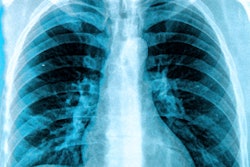
Virtual reality (VR) technology can make peripheral intravenous catheter (PIVC) placement less painful and anxiety-inducing for pediatric patients, according to research published online August 25 in JAMA Network Open.
In a randomized clinical trial involving over 100 patients receiving a PIVC, a team of researchers led by Jeffrey Gold, PhD, of the University of Southern California (USC) found that those who received VR had significantly lower anxiety and pain scores after catheter placement than those who just received the standard of care.
"This study's findings add to the evidence-based literature indicating that a VR intervention is capable of decreasing pain and anxiety among patients undergoing painful procedures," the authors wrote.
As previous research on utilizing VR to manage procedural pain and anxiety in pediatric patients has been limited, the researchers sought to assess the technology's benefits during PIVC placement in two pediatric clinical settings. The clinical trial included 107 patients with a median age of 14.7 who received PIVC at either the radiology department or an infusion center at Children's Hospital Los Angeles between April 12, 2017, to July 24, 2019.
Of these, 54 received standard care, which consisted of simple distraction techniques and the application of numbing cream. The remaining 53 patients used a head-mounted VR display to play a game (BearBlast, AppliedVR) from five minutes before the procedure until vascular access was successful.
In both groups of patients, the researchers recorded self-reported patient pain and anxiety scores on a scale of 0 to 10, with 10 indicating the highest level of pain and anxiety. The researchers also recorded scores provided by clinicians and caregivers based on their perceptions of the patient's pain and anxiety.
| Impact of virtual reality (VR) on post-PIVC patient pain and anxiety | ||
| Standard-of-care group | VR group | |
| Mean patient-reported anxiety scores | 3.14 | 1.85 |
| Mean caregiver-reported anxiety scores | 3.19 | 2.62 |
| Mean clinician-reported anxiety scores | 3.34 | 2.04 |
| Mean patient-reported pain scores | 2.54 | 1.34 |
| Mean caregiver-reported pain scores | 3.01 | 1.87 |
| Mean clinician-reported pain scores | 3.59 | 2.05 |
With the exception of the mean caregiver-reported anxiety scores, all differences were statistically significant.
"The results of this randomized clinical trial are statistically and clinically significant and support the role of VR systems during PIVC procedures in 2 pediatric clinical settings," the authors wrote.
VR is a feasible, cost-effective, and nonpharmacological option for managing pain and anxiety during routine venipuncture procedures, according to the researchers.
"Virtual reality interventions can target the reduction of needle phobia; reduce adverse and traumatic reactions to medical procedures; improve satisfaction for patients, caregivers, and health care practitioners; and lead to improved outcomes as a result of consistent adherence to treatment," they wrote.
The authors noted that future research on reducing pain and anxiety during medical procedures such as MRI, PIVC placement, lumbar puncture, otolaryngologic procedures, and cast removal may benefit from examining interventions that reduce or eliminate the use of medications.
"A movement towards nonsedating medical procedures using VR interventions may reduce many of the known adverse effects of medications and improve overall health outcomes for patients with acute and/or chronic medical needs," they wrote.




















